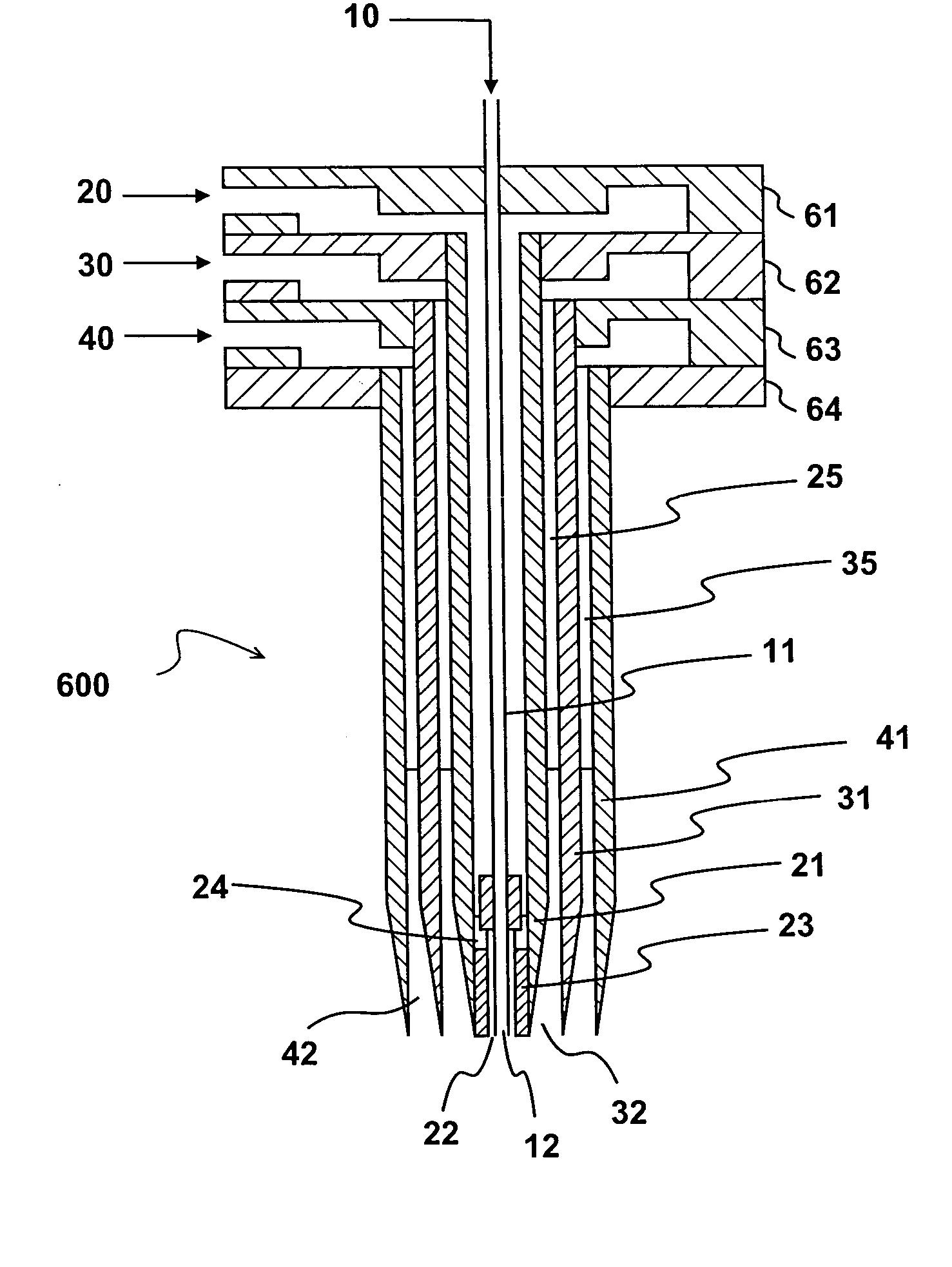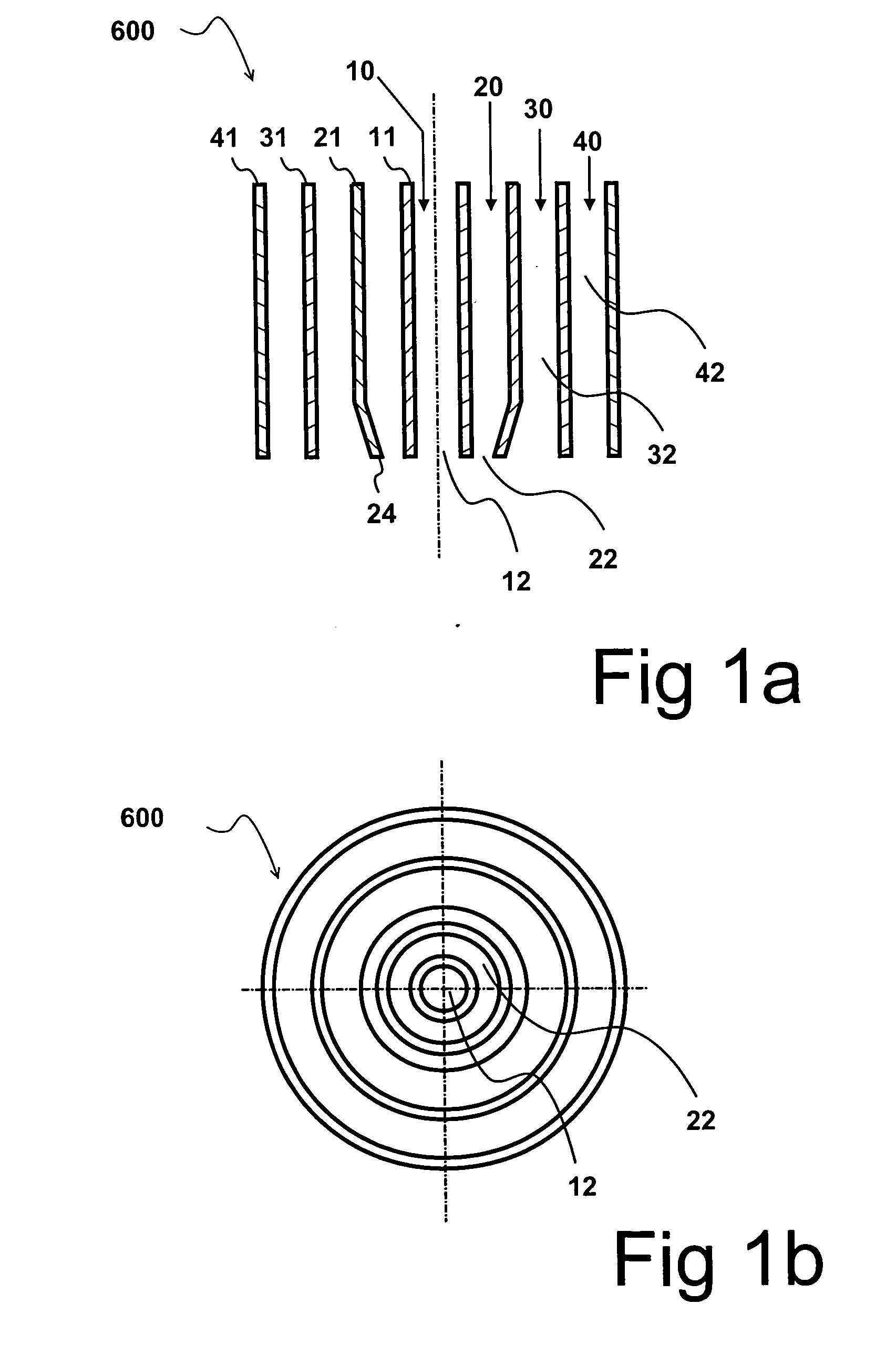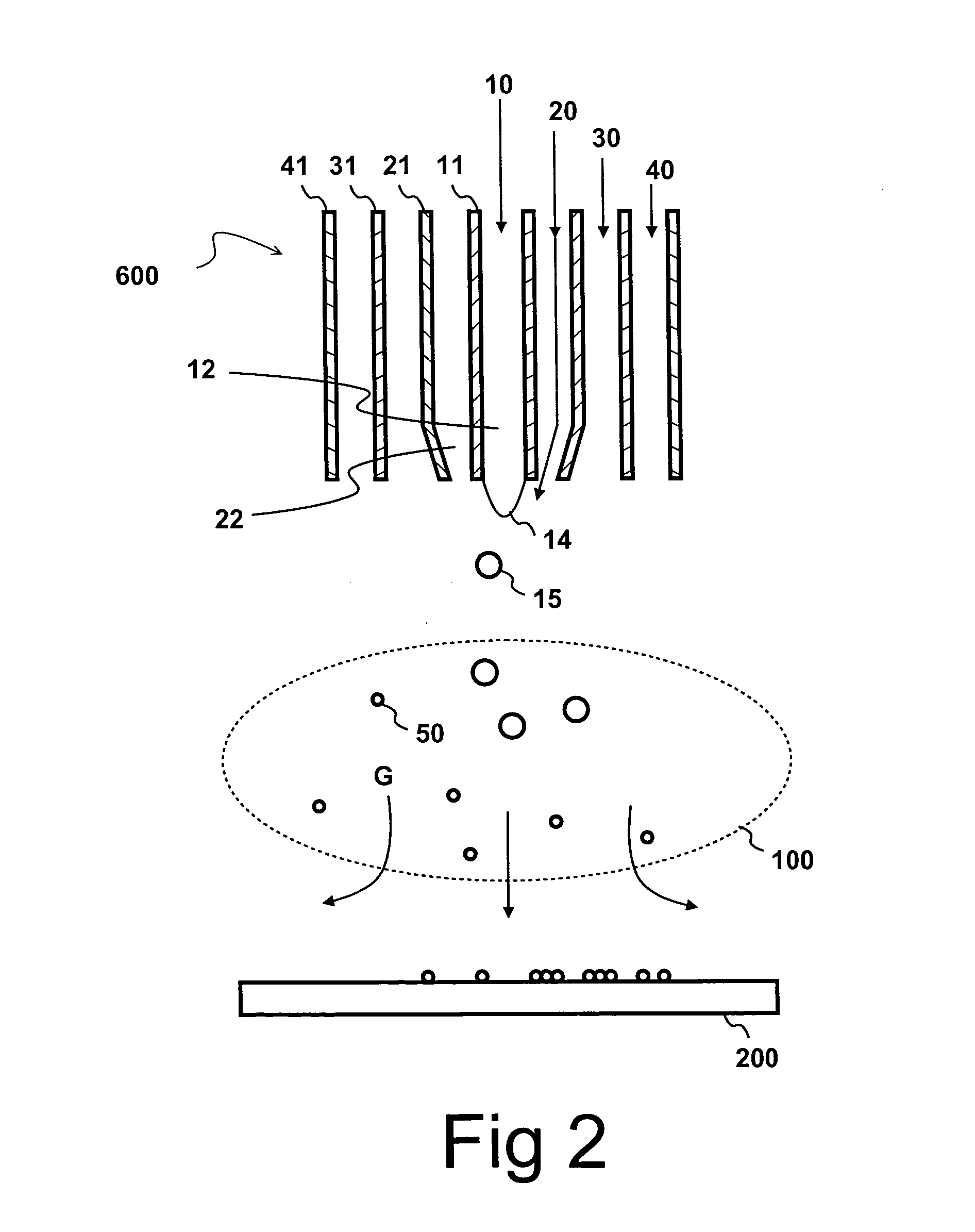Method and device for producing optical material, and an optical waveguide
a technology of optical material and optical waveguide, which is applied in the direction of glass deposition burners, combustion types, lighting and heating apparatuses, etc., to achieve the effects of reducing the formation of erbium ion clusters, reducing the production capacity of the device and the method according to the present invention, and improving the homogeneity of the produced particles
- Summary
- Abstract
- Description
- Claims
- Application Information
AI Technical Summary
Benefits of technology
Problems solved by technology
Method used
Image
Examples
Embodiment Construction
[0033] The device for making light-amplifying optical material comprises at least a burner assembly, which is used for producing particles of erbium-doped silica glass.
[0034] Referring to FIGS. 1a and 1b, the burner assembly 600 comprises four tubes 11, 21, 31, 41, which define four concentric nozzles 12, 22, 32, 42. The innermost nozzle, herein called as the liquid nozzle, is used for delivering liquid reactant 10. The outer surface of the tube 11 and the inner surface of the tube 21 define together an annular atomizing gas nozzle 22, from which an atomizing gas 20 is discharged. The atomizing gas is accelerated by a pressure difference prevailing over the nozzle 22. The velocity of the atomizing gas 20 may be further accelerated by the constriction 24 of the nozzle 22. Instead of the constriction 24 of the tube 21, the cross-section may also be reduced by implementing an enlargement of the outer surface of the liquid reactant tube 11. The burner assembly 600 may also comprise mor...
PUM
| Property | Measurement | Unit |
|---|---|---|
| velocity | aaaaa | aaaaa |
| velocity | aaaaa | aaaaa |
| Gas flow rate | aaaaa | aaaaa |
Abstract
Description
Claims
Application Information
 Login to View More
Login to View More - R&D
- Intellectual Property
- Life Sciences
- Materials
- Tech Scout
- Unparalleled Data Quality
- Higher Quality Content
- 60% Fewer Hallucinations
Browse by: Latest US Patents, China's latest patents, Technical Efficacy Thesaurus, Application Domain, Technology Topic, Popular Technical Reports.
© 2025 PatSnap. All rights reserved.Legal|Privacy policy|Modern Slavery Act Transparency Statement|Sitemap|About US| Contact US: help@patsnap.com



